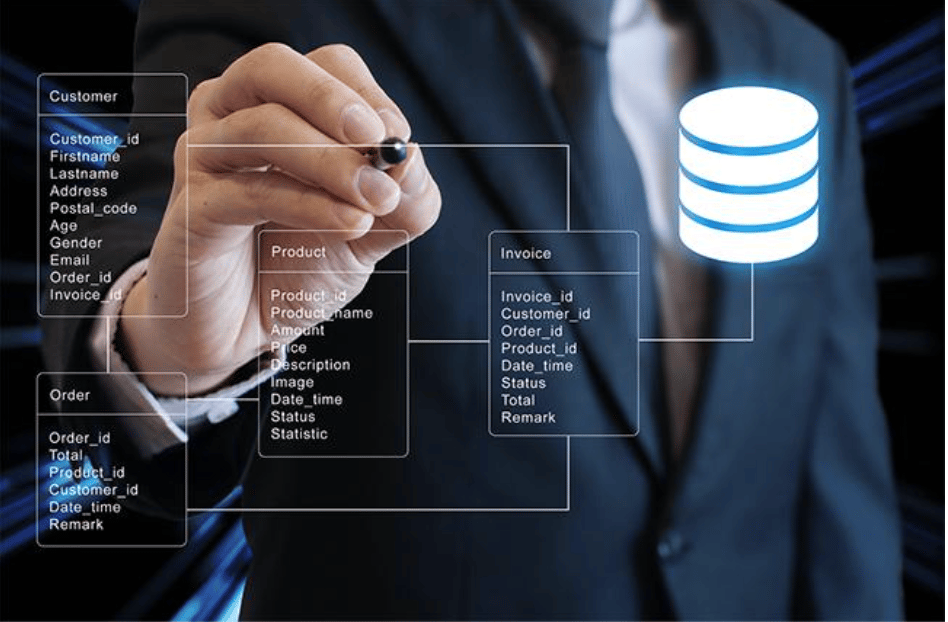Database development is the planning, conception, technical implementation and maintenance of databases.
What is a database?
A database is a software solution for electronic data management. It includes a database or a data set and a database management system. The DBMS only allows the handling of the database in the form of entering, storing, editing, displaying, organizing or deleting data. In addition, the database management system can be used to set dependencies and access rights. Interactions with the database take place via a specific database language in the form of commands that either a user or a second software system (for instance, a computer program or a web technology) can carry out. The most common database language is SQL and the associated DBMS MySQL. Software providers such as Microsoft, for example, offer ready-made database software with Access.
Phases of database development
In database development services, different phases are passed through and different models are used. Even if each individual phase of database development is titled differently, they can usually be broken down to four substeps that a database developer goes through in cooperation with his customers.
-
Requirements analysis
As part of a requirements analysis, it is clarified which information is available in what form of the data and what gain of knowledge or administrative goal is to be achieved with the development of the database.
-
Conception
This phase, the conception of a database, is first about semantic data modeling. For example, in an entity relationship model, or ER model for short, the objects (entities) can be connected to each other similar to a mind map to represent their relationships to each other (relationship types).
-
Relational model
The relational model is about the logic of a database. In this phase, a design translates the previously created ERM into several tables (lations) and creates a prototype. For example, the use of this system according to the relational model results in three tables called relation schemes from two entities connected by a relationship type.
-
Physical design
Finally, the model is finally transferred to a database system as a physical design.
As Stephan Kleuker emphasizes in his book on database development, after the transfer to the database system, the individual functions must be thoroughly tested for the purpose of quality assurance. As he mentions in the chapter on database testing, various frameworks, such as JUnit, are suitable for this. Even after the test, it is part of database development to continuously check and optimize the database.
Create a database
If you want to have a database created as a company and do not have your own IT department, contact database developers. Database developers can be software companies or agencies that specialize in database development and develop a database with SQL or other database languages from scratch. Since databases are also used in web development as mentioned above, a web agency often also offers to create a database. Especially if a web-based database is to be created, you are the right contact person.
Since the market is very fast-paced and upheavals often take place in the field of digitization, companies must be flexible. Databases are agile software and facilitate many work processes that would otherwise have to be done manually. With database systems such as company databases, customer databases or product databases, SMEs in particular can respond quickly to inquiries and are also better protected against data loss.
